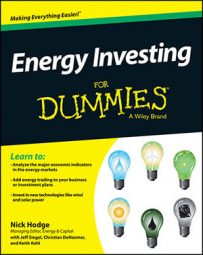Energy investors don’t need a crystal ball to see the fundamental shift taking place in the North American natural gas industry. In a relatively short period of time, North America has increasingly relied on unconventional sources to meet demand.
To judge how significant a role unconventional natural gas sources are playing, look no further than the U.S. Energy Information Administration (EIA)’s breakdown of the growth in withdrawals and production between 2007 and 2011, which is included in this table.
| Source | 2007 | 2008 | 2009 | 2010 | 2011 |
|---|---|---|---|---|---|
| Gas wells | 15 | 15.1 | 14.4 | 13.3 | 12.3 |
| Oil wells | 5.7 | 5.6 | 5.7 | 5.8 | 5.9 |
| Shale gas wells | 2 | 2.9 | 4 | 5.8 | 8.5 |
| Coal-bed wells | 2 | 2 | 2 | 1.9 | 1.8 |
When deciding between North American gas stocks and playing the international field, always weigh a specific country’s history with developing its unconventional resources. In Europe, and particularly in France, an anti-fracking sentiment only hinders production. In the case of France, the government imposed a moratorium on hydraulic fracturing back in 2011. Barring a miracle, it won’t be lifted anytime soon.
Nearly the same fight happened when New York imposed a similar ban on hydraulic fracturing after a media blitz stoked fears over contaminated water. In March 2013, the New York Assembly passed a second, two-year ban on the practice.
Having a lot of gas doesn’t necessarily mean that a country will successfully develop it soon. According to an EIA report in 2011, China holds the largest amount of recoverable shale gas in the world, yet the country may be decades away from producing shale gas because it lacks the advanced technology available in the United States.

